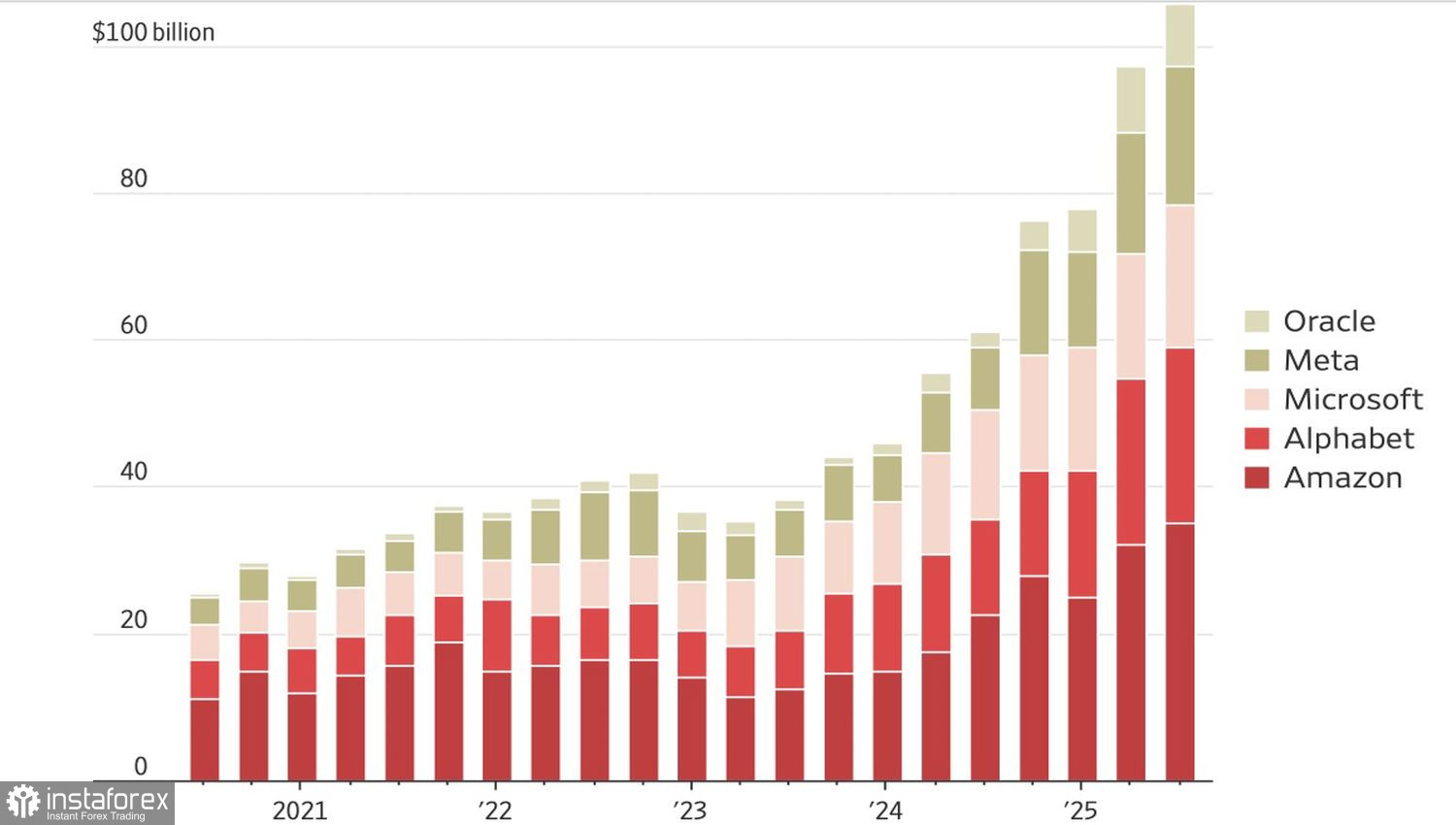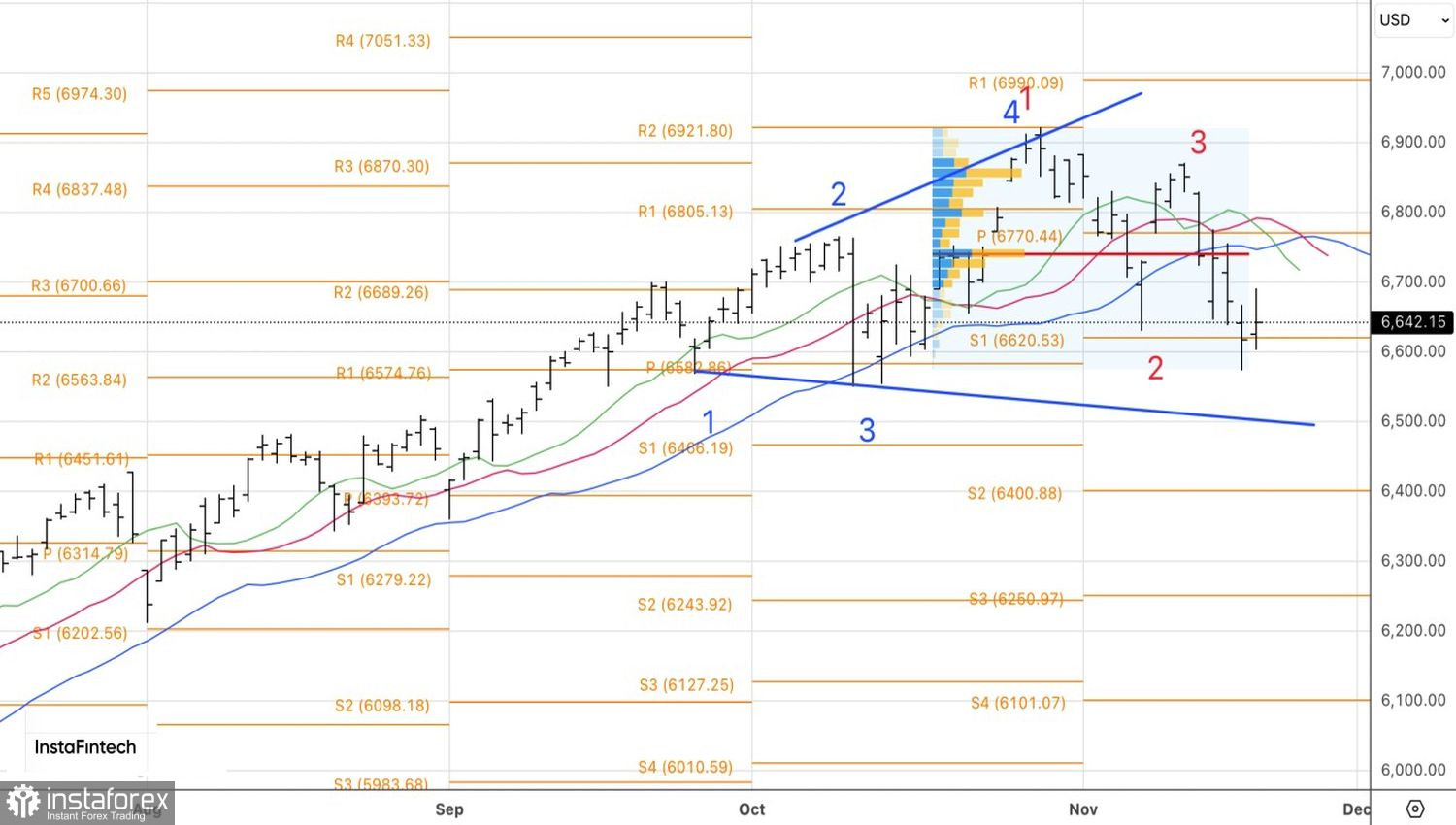NVIDIA has rescued the market! The positive corporate earnings report from the world's largest company allowed the S&P 500 to break a four-day losing streak, with its shares rising by 6.5% in after-hours trading. From the record highs in late October, shares of the tech giant had dropped by 12%, dragging down not only the entire sector but also American stock indices. It's time to make a comeback.
Dynamics of S&P 500 and Tech Sector Stocks

Dynamics of S&P 500 and Tech Sector Stocks
NVIDIA's revenue for the third quarter amounted to $57 billion, with $51.2 billion coming from data centers, and earnings per share increased to $1.3. All figures exceeded Wall Street analysts' forecasts, including the sales forecast for the fourth quarter at $65 billion. These impressive results allow for hopes of a recovery in the upward trend for the tech giant's stocks.
In the entire history of their trading, recoveries after drops of 10% or more have occurred 16 times, with an average decline of 16.7%. The size of these declines ranges from 10.1% in February 2023 to 24% in the first quarter of 2025. Five times, the drops in NVIDIA's shares qualified as "bear markets," falling by 20% or more.
After the report from the world's largest company, there will be fierce discussions regarding artificial intelligence. Optimists will argue that this topic is still hot and will ultimately allow the S&P 500 to restore its upward trend. Pessimists will point to the high costs faced by tech companies and doubts about their profitability.
Dynamics of Magnificent Seven's AI Technology Expenditures

The problem is that declines in the broad stock index during October and November were fueled not only by inflated fundamental valuations and doubts about the effectiveness of tech companies. The market stopped believing in a federal funds rate cut in December, and the minutes from the October FOMC meeting definitively dissuaded investors from expecting a continuation of the monetary expansion cycle in 2025. Many officials deemed this inappropriate.
Moreover, the Bureau of Labor Statistics has no intention of providing the October employment report. Its figures will be included in the November statistics, which will be released on December 16, after the last FOMC meeting of this year. The lack of data forces the Fed to act cautiously. Rates will most likely remain at 3.75-4% until the January meeting, which is bad news for American stocks.

The S&P 500 may face difficulties due to slowing US economic growth. The longest shutdown in history is likely to subtract about 1 percentage point from GDP. These figures will be known in 2026, and in this context, a rate cut may seem like a drowning man's lifeline, which could frighten the stock market.
Technically, on the daily chart of the S&P 500, bulls have managed to hang onto the support level of 6,620. However, as long as quotes remain below the fair value of 6,740, bears are in control. Any rise in the broad stock index should be used for selling.





















